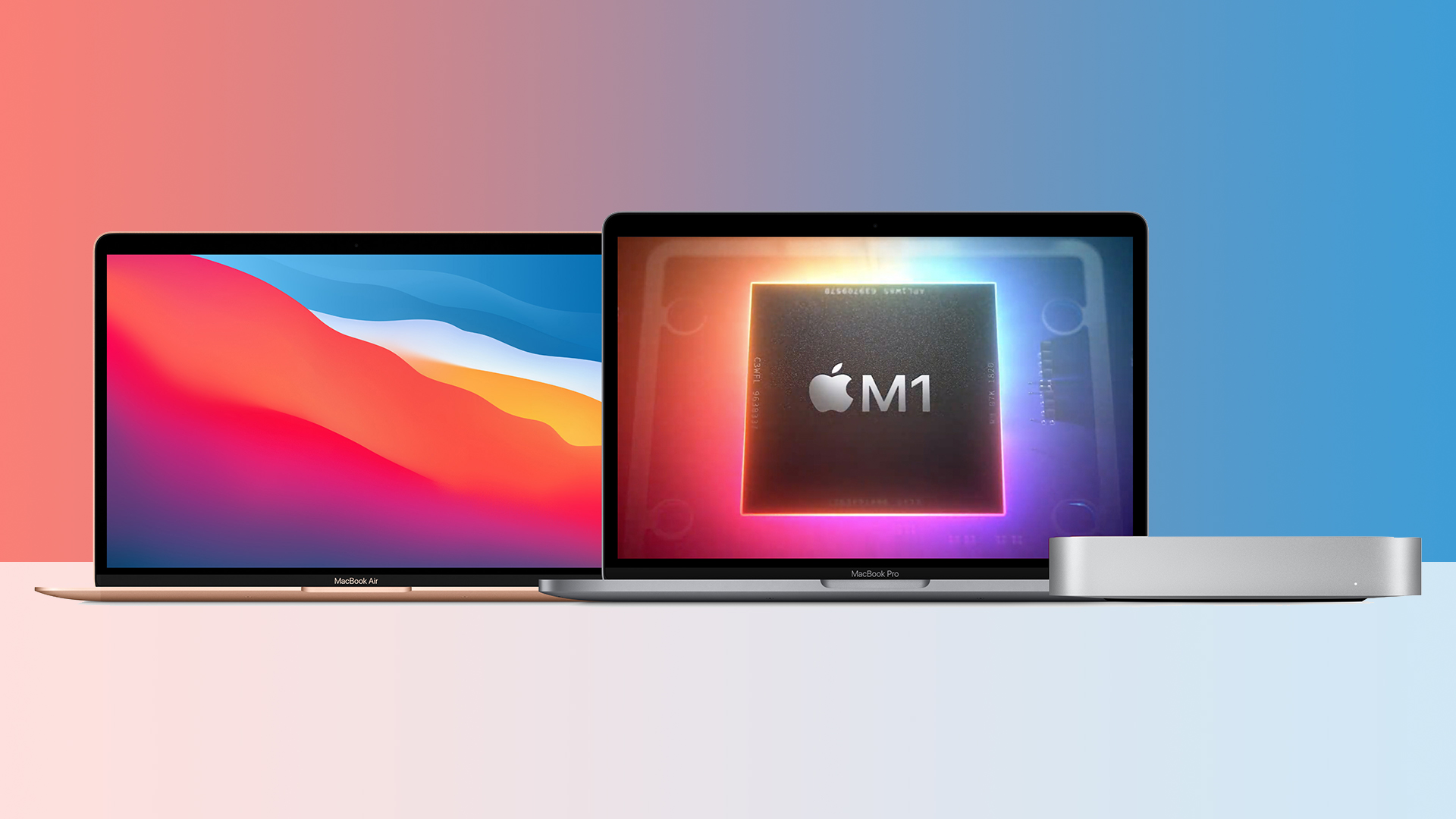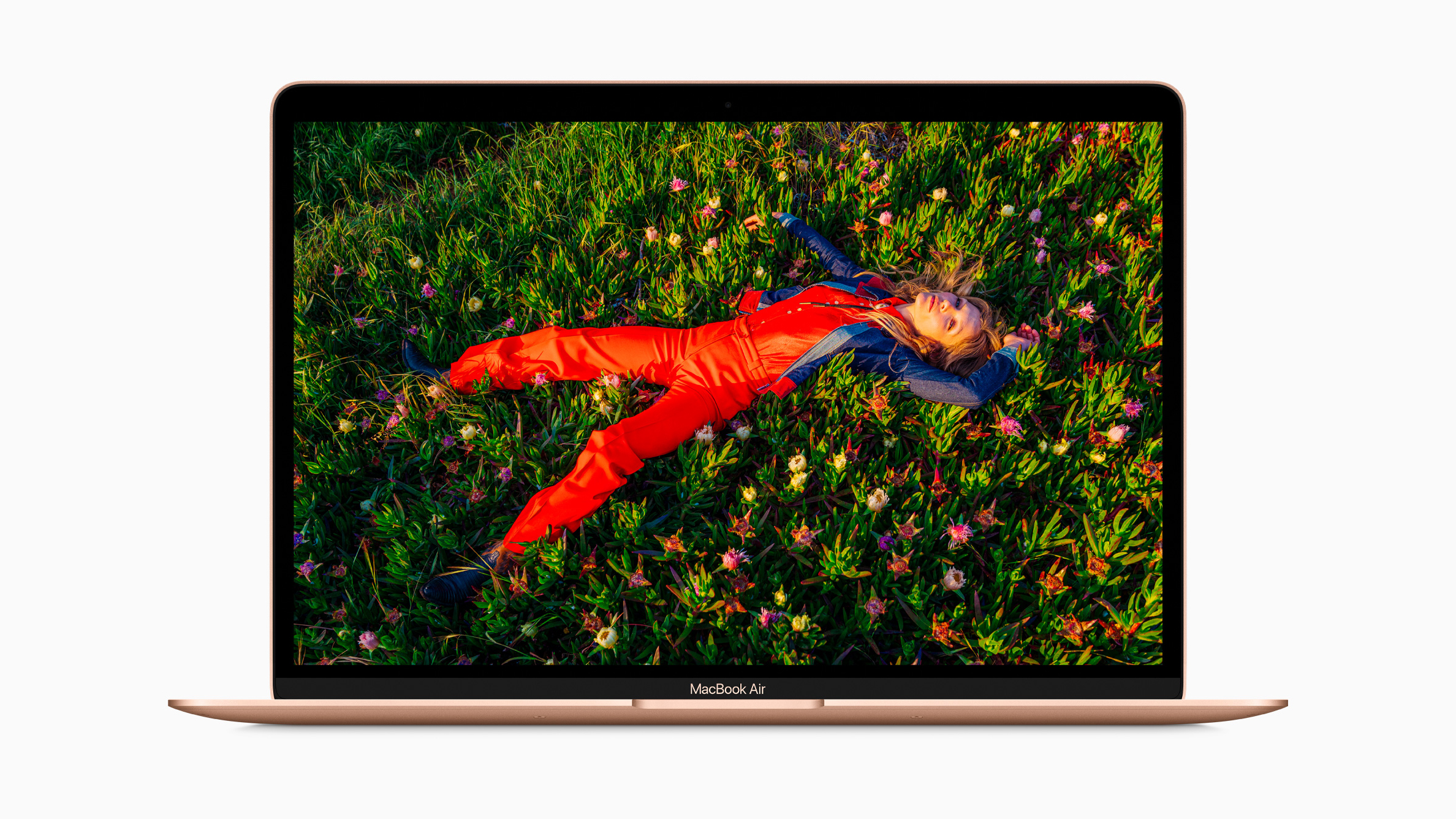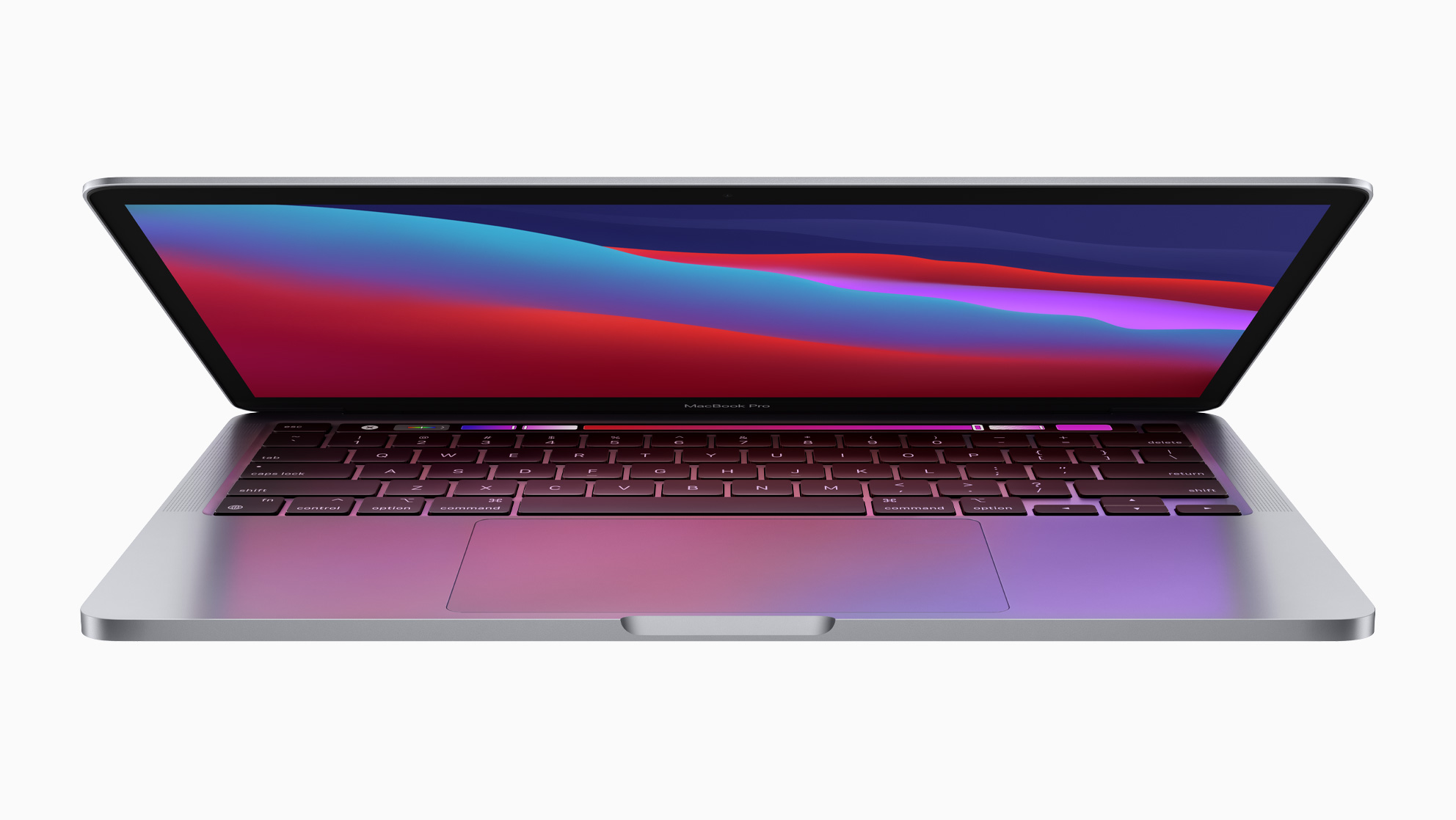

Apple has unveiled the first Macs using the 'M1', its new custom processor made for desktop and laptop computers, and they really show off the speed that Apple's own chips are capable of.
The first machines to use the new chip are the MacBook Air, 13-inch MacBook Pro and Mac Mini. All three are available to order today, but will be released next week.
• Browse the new Macs at the Apple Store US
• Browse the new Macs at the Apple Store UK
• Browse the new Macs at the Apple Store Australia
The Apple M1 features an eight-core processor, with four high-performance cores built for speed, and four high-efficiency cores for less intensive tasks. They can all run together for the most hardcore needs, though.
Apple says the high-performance cores are the fastest computer core on the planet, though we haven't yet been able to hear how it's measuring that. But Apple also says that even the low-power cores are as powerful as the cores in the Intel MacBook Air, and that only had two of them, so you can imagine what a huge step up this is going to be. In fact, you don't have to imagine; we'll tell you in a moment.
The M1 chip also delivers its peak performance at around a quarter of the power use of a similar Intel chip, and Apple said its new machine will consume around 60% less power in operation.
The M1's GPU is up to eight cores (the cheapest MacBook Air has seven cores), and Apple calls it the world's fastest integrated graphics.
Sign up to the T3 newsletter for smarter living straight to your inbox
Get all the latest news, reviews, deals and buying guides on gorgeous tech, home and active products from the T3 experts
Now, let's talk about the machines themselves.

The new Macs explained
The new MacBook Air totally replaces the Intel version that came before – it's no longer available to buy on Apple's site. It comes in at the same price, starting at $999 / £999 / AU$1,599, which gets you the M1 chip, 256GB of storage and 8GB of RAM. You can step up a $1,249 / $1,249 / AU$1,949 version with 512GB storage and still 8GB RAM. You can upgrade to 16GB of RAM, or anywhere up to 2TB of storage.
Apple says that the processor is up to 3.5 times faster than the most recent Intel version, graphics performance is up to 5x faster (as ever, it's not entirely clear what 'faster' means for graphics), and the SSD is twice as fast.
The design is the same, but it does all this with no fan in the new version, so it's totally silent. Battery life is up to twice as long as the previous version, depending on use. The screen is improved with P3 wide colour support, too.
The 13-inch MacBook Pro also now uses the M1 chip, and Apple says that gives you up to 2.8x faster processor performance than the previous generation, again with up to 5x faster graphics. Unlike the MacBook Air, there is a fan in the MacBook Pro, which Apple says helps to sustain high speeds, which suggests that the Air might struggle with thermal throttling during really long pro-level tasks, but will still give the average user a ridiculous amount of performance.

The MacBook Pro starts from $1,299 / £1,299 / AU$1,999, which gives you the same 256GB of storage and 8GB of RAM as the MacBook Air. A $1,499 / £1,499 / AU$2,299 version ups the storage to 512GB. Given that the specs are all the same as the Air, what you're paying the extra for here some feature improvements: the screen is 25% brighter, it has higher-quality microphones, it has the Touch Bar, and has even more battery life – the most in any Mac, ever.
What this MacBook Pro noticeably lacks is the option add more than 16GB of RAM, or more than 2TB of storage – Intel versions of the MacBook Pro can double both of these, which are essential for some pros. It's a good thing, then, that Intel MacBook Pros have stuck around too, and the M1 version is just a new option, not a total replacement, like the MacBook Air.
The last M1 machine is the Mac Mini, which is the only model that hadn't leaked beforehand. Apple says the M1 gives this up to 3x faster processor performance than the previous model, and up to 6x faster graphics. Like the MacBook Pro, cooling will help with sustained performance.
There's been a price drop here – the new Mac Mini starts from $699 / £699 / $1,099, again with 256GB of storage and 8GB RAM. Again, you can move to 512GB for $899 / £899 / AU$1,399. And again, you can go up to 2TB of storage and 16GB of RAM, with the latter in particular being a disappointingly limited option for high-end users. Again, though, the Intel options can go higher, and are still available.
You can connect displays up to 6K to the Mac Mini, which is impressive. All of these machines have USB 4/Thunderbolt 4 ports.
• Browse the new Macs at the Apple Store US
• Browse the new Macs at the Apple Store UK
• Browse the new Macs at the Apple Store Australia
You can watch the full announcement below to hear even deeper details. Apple also announced that macOS Big Sur will be released on Thursday November 10th.
- Black Friday MacBook Air deals: great prices on the old version!
- Black Friday MacBook Pro deals: if you want to go Intel still
- Best Apple Black Friday deals
Matt is T3's former AV and Smart Home Editor (UK), master of all things audiovisual, overseeing our TV, speakers and headphones coverage. He also covered smart home products and large appliances, as well as our toys and games articles. He's can explain both what Dolby Vision IQ is and why the Lego you're building doesn't fit together the way the instructions say, so is truly invaluable. Matt has worked for tech publications for over 10 years, in print and online, including running T3's print magazine and launching its most recent redesign. He's also contributed to a huge number of tech and gaming titles over the years. Say hello if you see him roaming the halls at CES, IFA or Toy Fair. Matt now works for our sister title TechRadar.


